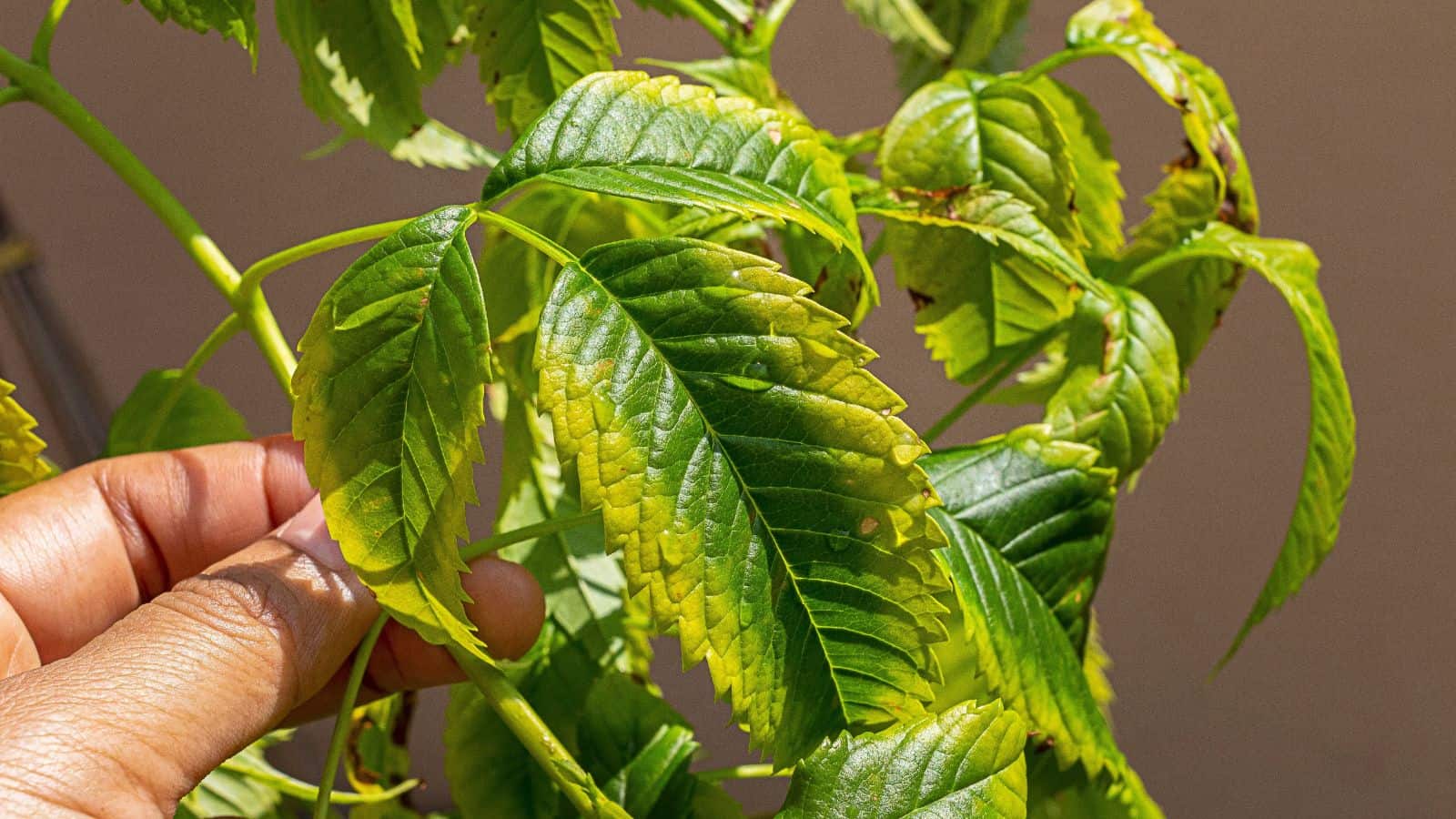Healthy plants require a balanced supply of nutrients to thrive. When they don’t get what they need, they show signs of nutrient deficiencies. Understanding these signs can help you diagnose and correct the problem before it becomes severe. Here are seven tips to help you understand and identify plant nutrient deficiencies.

1. Observe Leaf Color Changes
The color of your plant’s leaves can provide important clues about nutrient deficiencies.
Common Symptoms:
- Nitrogen Deficiency: Yellowing of older leaves while new leaves remain green.
- Iron Deficiency: Yellowing between the veins of young leaves, while veins remain green.
- Phosphorus Deficiency: Purplish tint to the leaves, particularly the older ones.
2. Check for Leaf Deformation
Leaves that are misshapen or have unusual growth patterns can indicate specific nutrient issues.
Common Symptoms:
- Calcium Deficiency: New leaves may be distorted or develop irregular margins.
- Boron Deficiency: Growing tips of plants may die, and leaves may appear thickened and brittle.
3. Examine Leaf Edges
The edges of your plant’s leaves can show signs of nutrient stress.
Common Symptoms:
- Potassium Deficiency: Brown, scorched, or yellow edges on older leaves.
- Magnesium Deficiency: Yellowing along the edges and between the veins of older leaves.
4. Monitor Plant Growth
Stunted or slow growth is a general sign of nutrient deficiencies but can help narrow down the specific nutrient lacking.
Common Symptoms:
- Phosphorus Deficiency: Overall stunted growth and delayed maturity.
- Nitrogen Deficiency: Slow growth and smaller leaves.
5. Look for Unusual Spots
Spots or blotches on leaves can indicate various nutrient problems.
Common Symptoms:
- Manganese Deficiency: Brown spots on young leaves.
- Potassium Deficiency: Small necrotic spots on older leaves.
6. Check the Soil
Soil conditions play a crucial role in nutrient availability. Conduct a soil test to understand its pH and nutrient content.
Soil Tips:
- pH Levels: Ensure the soil pH is appropriate for your plant species. Nutrient availability is often pH-dependent.
- Soil Composition: Add organic matter to improve soil structure and nutrient-holding capacity.
7. Use a Balanced Fertilizer
Using a balanced fertilizer can prevent deficiencies and help diagnose them when they occur.
Fertilizer Tips:
- General Use: Apply a balanced, all-purpose fertilizer to provide a broad spectrum of nutrients.
- Specific Deficiencies: Use specialized fertilizers to address specific nutrient deficiencies, such as iron chelates for iron deficiency or calcium supplements for calcium deficiency.
